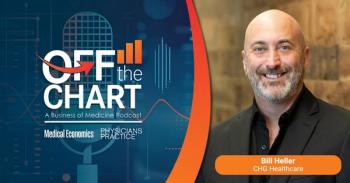
4 surprising facts you didn't know about healthcare debt
While many people blame poor spending habits for bankruptcy, the number one reason is medical debt.
While many people blame poor spending habits for bankruptcy, the
The U.S. spends more per person on healthcare than any other country in the world. According to the Centers for Medicare & Medicaid Services, this spending came to the tune of
The worst part is that everyone from patients to providers don’t fully understand medical debt and the detrimental effect it has on patients and the healthcare industry as a whole. Check out these four surprising facts about healthcare debt:
1. More than 60 percent of Americans deplete their savings to pay off medical debt
Nearly all of us have had to dip into our savings to pay off a bill or an unexpected expense. However, according to a Kaiser Family Foundation and New York Times survey,
What many will find surprising is that this statistic includes those who have health insurance. In today’s healthcare landscape, even those with health insurance are struggling to pay increasing out-of-pocket expenses. In fact, of the population with health insurance,
2. Health insurance has continued to become less affordable since 2015
While recent laws have actually made insurance itself more affordable, the barriers to entry have continued to rise along with deductibles. When people cannot pay their deductible, more debt is created, leading to prices rising even more. It’s a vicious cycle that has forced millions to
3. Approximately 1 in 10 adults delay medical care due to cost
Medical treatment is starting to take a back seat in family budgets. Currently, the average
4. Debt creates rising medical care prices
According to a 2012 report,
For example, 20 percent of Americans would have to charge an unexpected $500 medical bill to a credit card and pay it off over time. With the average credit card
There seemingly is no end in sight when it comes to the vicious cycle of medical debt. Providers with an effective revenue cycle management strategy can work to help patients reduce their debt load and reduce their own charge off liability. Ultimately, these RCM strategies should help providers keep track of payments and help patients keep their payments on a schedule which works for them. If payments are frequently made on time and in full, less debt will continue to be created.
Steve Scibetta is the vice president and general manager at Ontario Systems. Shawn Yates is the director of product management at
Newsletter
Stay informed and empowered with Medical Economics enewsletter, delivering expert insights, financial strategies, practice management tips and technology trends — tailored for today’s physicians.








